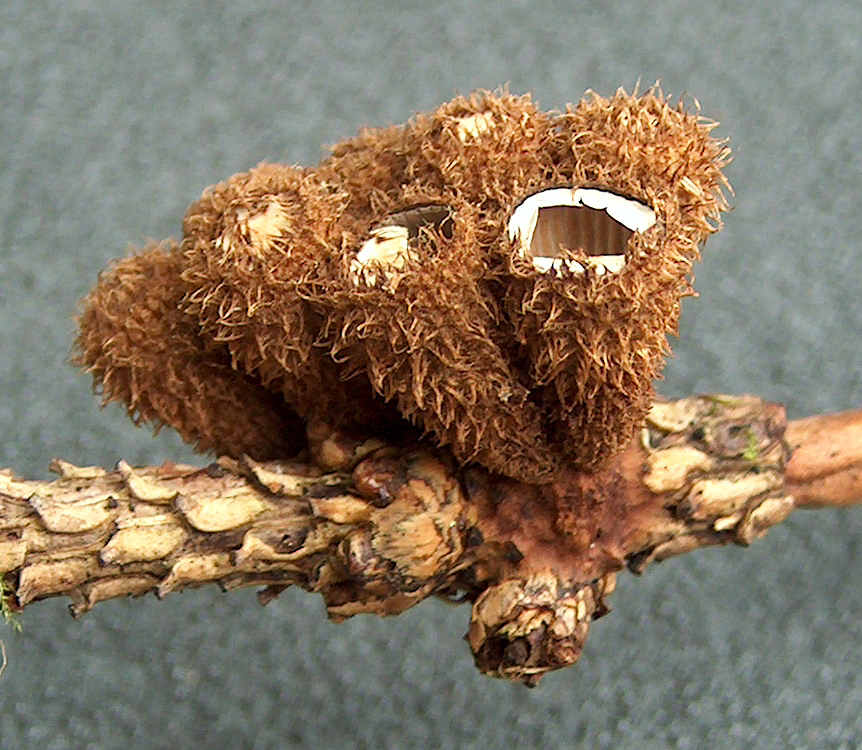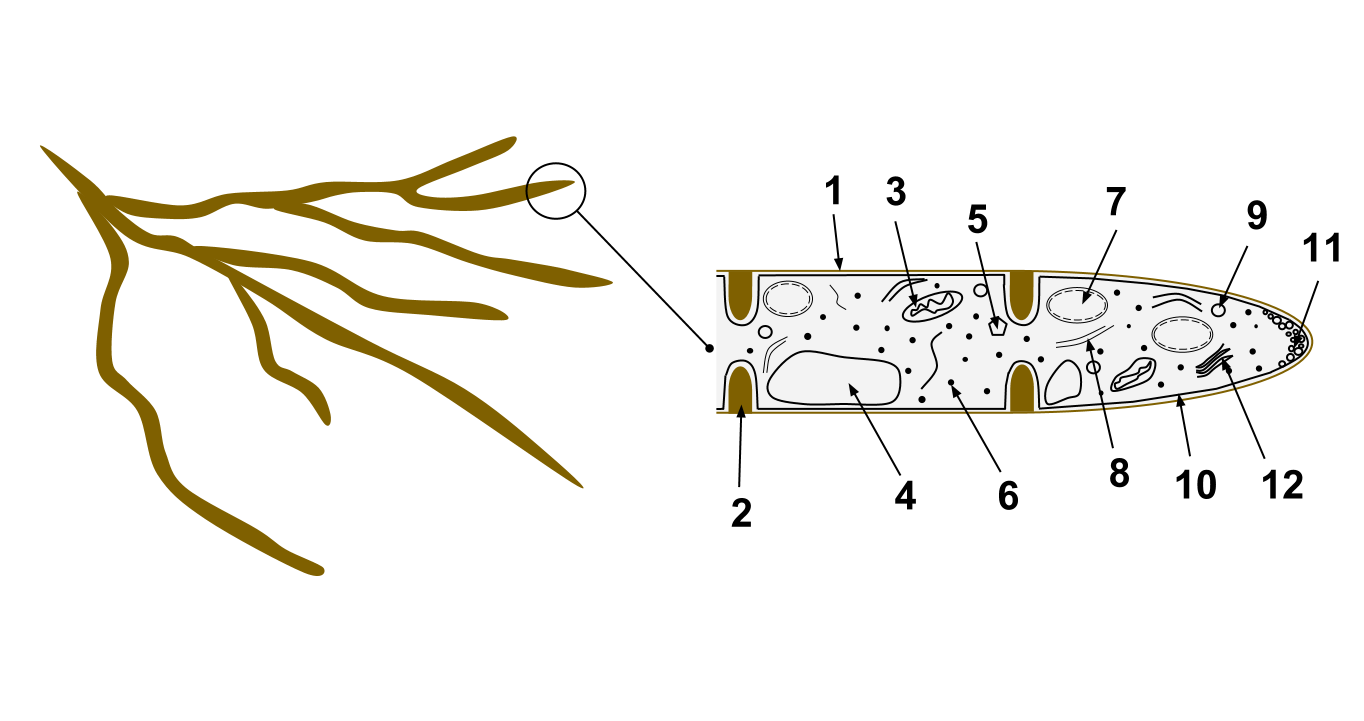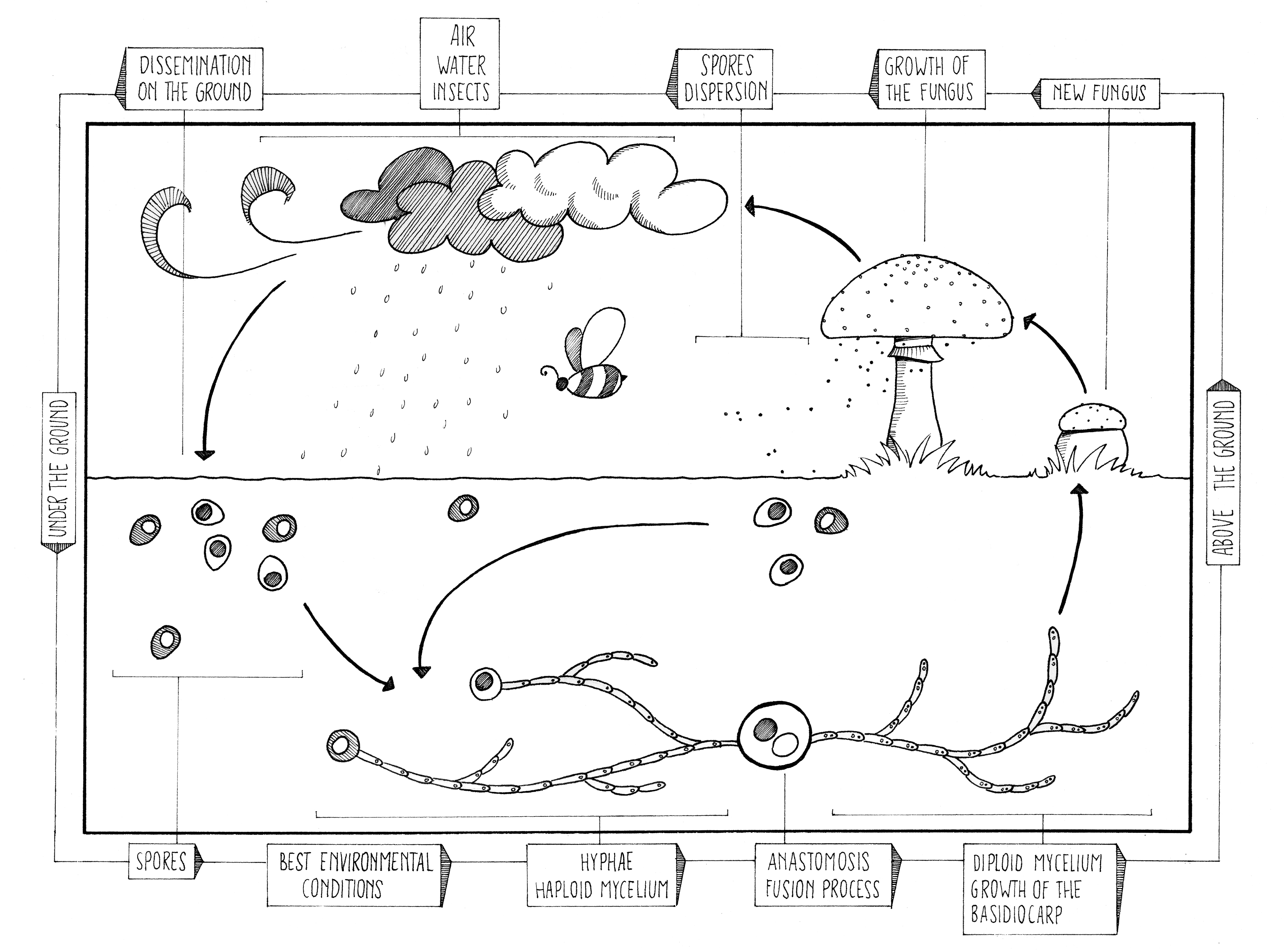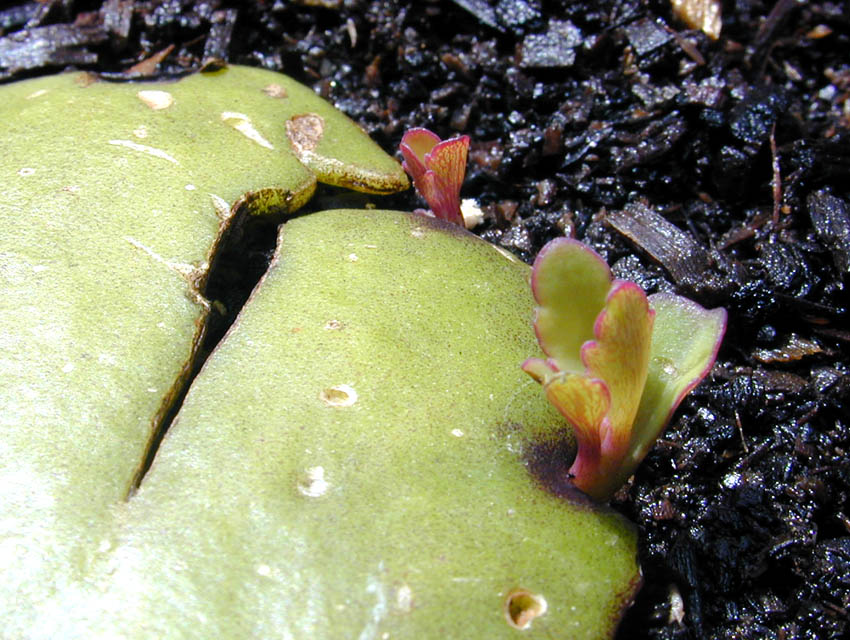|
Nidulariaceae
The Nidulariaceae ('nidulus' - small nest) are a family of fungi in the order Agaricales. Commonly known as the bird's nest fungi, their fruiting bodies resemble tiny egg-filled birds' nests. As they are saprobic, feeding on decomposing organic matter, they are often seen growing on decaying wood and in soils enriched with wood chips or bark mulch; they have a widespread distribution in most ecological regions. The five genera within the family, namely, ''Crucibulum'', '' Cyathus'', ''Mycocalia'', '' Nidula'', and '' Nidularia'', are distinguished from each other by differences in morphology and peridiole structure; more recently, phylogenetic analysis and comparison of DNA sequences is guiding new decisions in the taxonomic organization of this family. History Bird's nest fungi were first mentioned by Flemish botanist Carolus Clusius in ''Rariorum plantarum historia'' (1601). Over the next couple of centuries, these fungi were the subject of some controversy regarding whether ... [...More Info...] [...Related Items...] OR: [Wikipedia] [Google] [Baidu] |
Cyathus
''Cyathus'' is a genus of fungi in the Nidulariaceae, a family collectively known as the bird's nest fungi. They are given this name since they resemble tiny bird's nests filled with "eggs", structures large enough to have been mistaken in the past for seeds. However, these are now known to be reproductive structures containing spores. The "eggs", or ''peridioles'', are firmly attached to the inner surface of this fruit body by an elastic cord of mycelia known as a funiculus. The 45 species are widely distributed throughout the world and some are found in most countries, although a few exist in only one or two locales. ''Cyathus stercoreus'' is considered endangered in a number of European countries. Species of ''Cyathus'' are also known as splash cups, which refers to the fact that falling raindrops can knock the peridioles out of the open-cup fruit body. The internal and external surfaces of this cup may be ridged longitudinally (referred to as plicate or striate); this i ... [...More Info...] [...Related Items...] OR: [Wikipedia] [Google] [Baidu] |
Crucibulum Laeve
''Crucibulum'' is a genus in the Nidulariaceae, a family of fungi whose fruiting bodies resemble tiny egg-filled bird's nests. Often called "splash cups", the fruiting bodies are adapted for spore dispersal by using the kinetic energy of falling drops of rain. The "eggs" inside the bird's nests (technically known as peridioles) are hard waxy shells containing spores, and tend to stick to whatever nearby herbage they land on, thus increasing the odds of being consumed and dispersed by herbivorous animals. Members of this genus are saprobic, obtaining nutrients from dead organic matter, and are typically found growing on decayed wood and wood debris. The three known ''Crucibulum'' species (''C. laeve'', ''C. parvulum'', and ''C. cyathiforme'') are distinguished from other genera of the Nidulariaceae by their relatively simple funiculus – a cord of hyphae that connects the peridiole (the "eggs") to the exterior of the bird's nest. History Bird's nest fungi wer ... [...More Info...] [...Related Items...] OR: [Wikipedia] [Google] [Baidu] |
Crucibulum
''Crucibulum'' is a genus in the Nidulariaceae, a family of fungi whose fruiting bodies resemble tiny egg-filled bird's nests. Often called "splash cups", the fruiting bodies are adapted for spore dispersal by using the kinetic energy of falling drops of rain. The "eggs" inside the bird's nests (technically known as peridioles) are hard waxy shells containing spores, and tend to stick to whatever nearby herbage they land on, thus increasing the odds of being consumed and dispersed by herbivorous animals. Members of this genus are saprobic, obtaining nutrients from dead organic matter, and are typically found growing on decayed wood and wood debris. The three known ''Crucibulum'' species (''C. laeve'', ''C. parvulum'', and ''C. cyathiforme'') are distinguished from other genera of the Nidulariaceae by their relatively simple funiculus – a cord of hyphae that connects the peridiole (the "eggs") to the exterior of the bird's nest. History Bird's nest fungi wer ... [...More Info...] [...Related Items...] OR: [Wikipedia] [Google] [Baidu] |
Nidula
''Nidula'' is a genus of fungi in the family Agaricaceae. Their fruit bodies resemble tiny egg-filled birds' nests, from which they derive their common name "bird's nest fungi". Originally described in 1902, the genus differs from the related genera '' Cyathus'' and ''Crucibulum'' by the absence of a cord that attaches the eggs to the inside of the fruit body. The life cycle of this genus allows it to reproduce both sexually, with meiosis, and asexually via spores. Species in this genus produce a number of bioactive compounds, including 4-(''p''-hydroxyphenyl)-2-butanone, a major component of raspberry flavor and insect attractor used in pesticides. Taxonomy The genus ''Nidula'' was originally proposed by Violet S. White in her monograph on the North American species of the Nidulariaceae, and included the species ''N. candida'' and ''N. microcarpa''. The genus name is derived from the Latin ''nidula'', meaning "little nest".Brodie, ''The Bird's Nest Fungi'', p. 142. ... [...More Info...] [...Related Items...] OR: [Wikipedia] [Google] [Baidu] |
Nidularia
''Nidularia'' is a genus of nine species of fungi in the family Agaricaceae. Their fruit bodies resemble tiny egg-filled bird nests. The name comes from the Latin meaning ''nest''. The related genus ''Mycocalia'' was segregated from ''Nidularia'' in 1961 based on differences in the microscopic structure of the peridium. Taxonomy The name ''Nidularia'' first appeared in the scientific literature in 1790 when Pierre Bulliard published ''N. vernicosa'' and ''N. laevis''. This name, however, was not validly published, as it predated the starting point for naming of gasteroid fungi (1801), and it lacked a generic description. Jean Bulliard gave a generic description in 1791 when he added ''N. striata''. ''N. striata'' and ''N. vernicosa'' are now placed in ''Cyathus'', while ''N. laevis'' is in ''Crucibulum''. Bulliard's concept of ''Nidularia'' is synonymous with ''Cyathus''. ''Nidularia'' was again circumscribed in 1817 by Swedish mycologist Elias ... [...More Info...] [...Related Items...] OR: [Wikipedia] [Google] [Baidu] |
Fungi
A fungus (plural, : fungi or funguses) is any member of the group of Eukaryote, eukaryotic organisms that includes microorganisms such as yeasts and Mold (fungus), molds, as well as the more familiar mushrooms. These organisms are classified as a Kingdom (biology), kingdom, separately from the other eukaryotic kingdoms, which by one traditional classification include Plantae, Animalia, Protozoa, and Chromista. A characteristic that places fungi in a different kingdom from plants, bacteria, and some protists is chitin in their cell walls. Fungi, like animals, are heterotrophs; they acquire their food by absorbing dissolved molecules, typically by secreting digestive enzymes into their environment. Fungi do not photosynthesize. Growth is their means of motility, mobility, except for spores (a few of which are flagellated), which may travel through the air or water. Fungi are the principal decomposers in ecological systems. These and other differences place fungi in a single gro ... [...More Info...] [...Related Items...] OR: [Wikipedia] [Google] [Baidu] |
Agaricales
The fungal order Agaricales, also known as gilled mushrooms (for their distinctive gills) or euagarics, contains some of the most familiar types of mushrooms. The order has 33 extant families, 413 genera, and over 13,000 described species, along with six extinct genera known only from the fossil record. They range from the ubiquitous common mushroom to the deadly destroying angel and the hallucinogenic fly agaric to the bioluminescent jack-o-lantern mushroom. History, classification and phylogeny In his three volumes of '' Systema Mycologicum'' published between 1821 and 1832, Elias Fries put almost all of the fleshy, gill-forming mushrooms in the genus '' Agaricus''. He organized the large genus into "tribes", the names of many of which still exist as common genera of today. Fries later elevated several of these tribes to generic level, but later authors—including Gillet, Karsten, Kummer, Quélet, and Staude—made most of the changes. Fries based his classifica ... [...More Info...] [...Related Items...] OR: [Wikipedia] [Google] [Baidu] |
Basidiomycetes
Basidiomycota () is one of two large divisions that, together with the Ascomycota, constitute the subkingdom Dikarya (often referred to as the "higher fungi") within the kingdom Fungi. Members are known as basidiomycetes. More specifically, Basidiomycota includes these groups: mushrooms, puffballs, stinkhorns, bracket fungi, other polypores, jelly fungi, boletes, chanterelles, earth stars, smuts, bunts, rusts, mirror yeasts, and '' Cryptococcus'', the human pathogenic yeast. Basidiomycota are filamentous fungi composed of hyphae (except for basidiomycota-yeast) and reproduce sexually via the formation of specialized club-shaped end cells called basidia that normally bear external meiospores (usually four). These specialized spores are called basidiospores. However, some Basidiomycota are obligate asexual reproducers. Basidiomycota that reproduce asexually (discussed below) can typically be recognized as members of this division by gross similarity to others, by the forma ... [...More Info...] [...Related Items...] OR: [Wikipedia] [Google] [Baidu] |
Vegetative Reproduction
Vegetative reproduction (also known as vegetative propagation, vegetative multiplication or cloning) is any form of asexual reproduction occurring in plants in which a new plant grows from a fragment or cutting of the parent plant or specialized reproductive structures, which are sometimes called vegetative propagules. Many plants naturally reproduce this way, but it can also be induced artificially. Horticulturists have developed asexual propagation techniques that use vegetative propagules to replicate plants. Success rates and difficulty of propagation vary greatly. Monocotyledons typically lack a vascular cambium, making them more challenging to propagate. Background Plant propagation is the process of plant reproduction of a species or cultivar, and it can be sexual or asexual. It can happen through the use of vegetative parts of the plants, such as leaves, stems, and roots to produce new plants or through growth from specialized vegetative plant parts. Wh ... [...More Info...] [...Related Items...] OR: [Wikipedia] [Google] [Baidu] |
Basidiospore
A basidiospore is a reproductive spore produced by Basidiomycete fungi, a grouping that includes mushrooms, shelf fungi, rusts, and smuts. Basidiospores typically each contain one haploid nucleus that is the product of meiosis, and they are produced by specialized fungal cells called basidia. Typically, four basidiospores develop on appendages from each basidium, of which two are of one strain and the other two of its opposite strain. In gills under a cap of one common species, there exist millions of basidia. Some gilled mushrooms in the order Agaricales have the ability to release billions of spores. The puffball fungus '' Calvatia gigantea'' has been calculated to produce about five trillion basidiospores. Most basidiospores are forcibly discharged, and are thus considered ballistospores. These spores serve as the main air dispersal units for the fungi. The spores are released during periods of high humidity and generally have a night-time or pre-dawn peak concentration ... [...More Info...] [...Related Items...] OR: [Wikipedia] [Google] [Baidu] |
Taxa
In biology, a taxon ( back-formation from '' taxonomy''; plural taxa) is a group of one or more populations of an organism or organisms seen by taxonomists to form a unit. Although neither is required, a taxon is usually known by a particular name and given a particular ranking, especially if and when it is accepted or becomes established. It is very common, however, for taxonomists to remain at odds over what belongs to a taxon and the criteria used for inclusion. If a taxon is given a formal scientific name, its use is then governed by one of the nomenclature codes specifying which scientific name is correct for a particular grouping. Initial attempts at classifying and ordering organisms (plants and animals) were set forth in Carl Linnaeus's system in ''Systema Naturae'', 10th edition (1758), as well as an unpublished work by Bernard and Antoine Laurent de Jussieu. The idea of a unit-based system of biological classification was first made widely available in 1805 in the ... [...More Info...] [...Related Items...] OR: [Wikipedia] [Google] [Baidu] |
Diploid
Ploidy () is the number of complete sets of chromosomes in a cell, and hence the number of possible alleles for autosomal and pseudoautosomal genes. Sets of chromosomes refer to the number of maternal and paternal chromosome copies, respectively, in each homologous chromosome pair, which chromosomes naturally exist as. Somatic cells, tissues, and individual organisms can be described according to the number of sets of chromosomes present (the "ploidy level"): monoploid (1 set), diploid (2 sets), triploid (3 sets), tetraploid (4 sets), pentaploid (5 sets), hexaploid (6 sets), heptaploid or septaploid (7 sets), etc. The generic term polyploid is often used to describe cells with three or more chromosome sets. Virtually all sexually reproducing organisms are made up of somatic cells that are diploid or greater, but ploidy level may vary widely between different organisms, between different tissues within the same organism, and at different stages in an organism's life cycle. ... [...More Info...] [...Related Items...] OR: [Wikipedia] [Google] [Baidu] |










